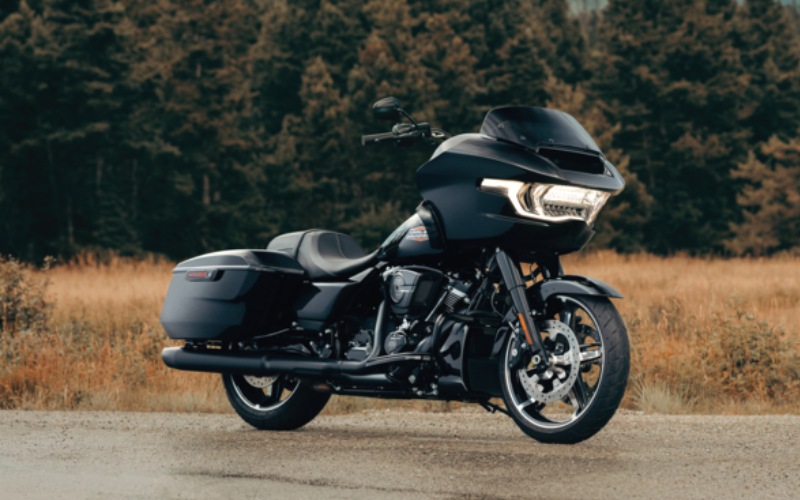How Mason, OH Riders Decide Between Harley-Davidson®'s Sharknose and Batwing Fairings
Queen City Harley-Davidson® - How Mason, OH Riders Decide Between Harley-Davidson®'s Sharknose and Batwing Fairings
When riders in Mason, OH start comparing the Harley-Davidson® Road Glide® and Harley-Davidson® Street Glide®, one question rises to the top: which fairing works best for the way I ride? Both are purpose-built for touring, yet the frame-mounted Sharknose and fork-mounted Batwing create two distinct front-end experiences. Understanding those differences—how the bike feels in wind, the feedback you get from the bars, and the cockpit view—makes the choice clearer and more rewarding.
This guide focuses on the most frequent question we hear: is a frame-mounted fairing more stable than a fork-mounted fairing? The short answer is that each design excels in different scenarios, and your ideal setup depends on how much of your riding happens at highway speeds, in crosswinds, on curvy backroads, or in stop-and-go traffic. Below, we break down what you will notice on day one, plus how to tailor either model with ergonomic and wind-management upgrades.
- Highway stability: A frame-mounted fairing tends to feel planted at higher speeds, especially when encountering crosswinds or passing large trucks.
- Steering feedback: A fork-mounted fairing transmits more of the front-end feel to your hands, which some riders prefer on twisty roads and in urban transitions.
- Wind management: Aerodynamic shaping helps both designs, but perceived airflow differs; the Sharknose channels air away from the bar, while the Batwing’s closer profile creates a classic, enveloped cockpit.
- Low-speed composure: Both tourers balance well at parking-lot pace; the difference comes down to the sensation of the front mass attached to the frame vs. fork.
- Cockpit view: The Sharknose often presents a wider, set-back perspective; the Batwing brings instruments and the 12.3-inch display visually closer.
Beyond fairings, both models share standout touring tech: a 12.3-inch color TFT display running Skyline OS, Ride Modes for changing conditions, and fairing-mounted speakers powered by a 200-watt, four-channel amplifier. Connected Navigation with turn-by-turn guidance, Bluetooth pairing, and LED lighting modernize the ride without clutter. Rider Safety Enhancements—such as Cornering ABS, Cornering Traction Control, Drag-Torque Slip Control, Vehicle Hold Control, and TPMS—operate in the background to assist when the road or weather changes unexpectedly.
Fit is equally important. Start with three checkpoints—reach to the bars, knee angle on the floorboards, and seat contour—then consider how wind meets your helmet and chest at your typical cruising speed. Remember that small changes can yield big comfort gains: a different windshield profile, a reach or mini-ape handlebar, or a touring seat with additional support can fine-tune posture and airflow. Many riders also add soft lowers for cold-weather rides or vented windshields for summer airflow.
- If you prioritize long interstate runs: You may prefer the composure and steady tracking feel associated with a frame-mounted fairing.
- If you ride mixed routes and value front-end feel: The fork-mounted fairing’s direct feedback can be satisfying on backroads and in city transitions.
- If you want an iconic silhouette: The Batwing has a timeless visual flow with integrated LED signature lighting.
- If you like a panoramic cockpit: The Sharknose places the display and gauges slightly farther forward, opening the rider’s visual field.
Frequently Asked Questions:
Do both touring models use the Milwaukee-Eight® 117 V-Twin?
Yes. Both platforms are powered by the Milwaukee-Eight® 117 V-Twin, delivering broad, tractable torque for confident roll-ons, two-up riding, and loaded touring.
Is Cornering ABS standard on both motorcycles?
Cornering Rider Safety Enhancements, including C-ABS, are available on both. These systems are designed to assist during mid-corner braking or low-traction situations.
Can I get turn-by-turn navigation on the 12.3-inch display?
Yes. H-D Connected Navigation provides turn-by-turn guidance and route options directly on the Skyline OS 12.3-inch color TFT display.
What setup works best for four-season riding?
Either motorcycle can be tailored with windshield choices, hand deflectors, soft lowers, and heated grips. Properly matched gear, plus Rider Safety Enhancements, expands your comfortable riding window in cold and wet weather.
Ultimately, the best choice is the one that aligns with your routes, your pace, and your sense of style. Queen City Harley-Davidson® can help you dial in ergonomics, wind protection, audio, and storage so your touring setup feels custom-fit from the first mile. Our staff is serving Mason, Batavia, and Dayton with the expertise to match fairing design to real-world riding, and the parts and service support to keep your touring machine dialed all season long.


